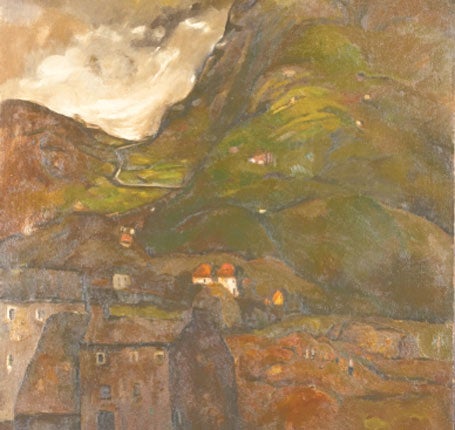Sheila Fell (1931-79), Offer Waterman & Co, London
Brushes with Cumbria's bleakest landscapes

Your support helps us to tell the story
From reproductive rights to climate change to Big Tech, The Independent is on the ground when the story is developing. Whether it's investigating the financials of Elon Musk's pro-Trump PAC or producing our latest documentary, 'The A Word', which shines a light on the American women fighting for reproductive rights, we know how important it is to parse out the facts from the messaging.
At such a critical moment in US history, we need reporters on the ground. Your donation allows us to keep sending journalists to speak to both sides of the story.
The Independent is trusted by Americans across the entire political spectrum. And unlike many other quality news outlets, we choose not to lock Americans out of our reporting and analysis with paywalls. We believe quality journalism should be available to everyone, paid for by those who can afford it.
Your support makes all the difference.Sheila Fell's fiercely distinctive talent as a painter of the landscapes of her native Cumbria was snuffed out early when she died after a fall. This show, at a small, private gallery in Chelsea, which gathers together 20 of her best paintings and drawings from public and private collections around the country, is the first large-scale showing of her work in about two decades. Why does she deserve to be remembered?
Natives of Cumbria who know her work tell us that her landscapes seem to epitomise the spirit of the place – its pitiless, wind-and-rain-scoured grandeur. There is certainly ferocity and vigour at full throttle in these paintings. It is an unruly world, ever subject to elemental buffetings. Man-made things, time and again, are battered into shapelessness. Human beings are often smudgily small-scale near-presences, fighting back against near-impossible odds. Buildings, always relatively crude shapings, as if fashioned with a thumb from plasticine, huddle wonkily, slouching in precarious ways, as if for mutual protection. The great fells which rise menacingly at the backs of these isolated human settlements, first flung up and then folded in on themselves, lour and loom. At times she paints a little like Van Gogh – great swirlings of cloud, as in one of the Dutchman's late, mystical visions of the night sky; at other times, she resembles Auerbach in the way that she pushes her heavily textured representations of landscape in the direction of abstraction.
The paintings positively wallow in the representation of snow. Trees often look marooned, skeletally. Lanes drift away like tiny fragments of black ribboning. Snow blankets all in 'Snowscape' (1976). Its colour shifts from beige to a grubby off-white as the brush strokes sweep roughly from left to right. Snow re-makes – and sometimes even obliterates – the shapes of things. And above all that snow, the clouds hang low like great swags of disreputable grey curtaining. Human life is forever fighting back, turning its bowed, stiffened spine to the worst that the weather can do. There is no serenity here, no peace, no sunshine, no uninterrupted blueness, no picturesqueness for its own sake – although, as if by magic, we do occasionally glimpse the flash of a sunlit space amid the gloom.
We see much of this spirit summarised in 'Rough Sea at Allonby'. There is so much agitation in this painting – as in so much of her work – in these thickly gouged swirlings and pushings of paint. 'Man in a Field', a very fine piece of 1964, with such a globby sheen, it looks as if it may have been finger-smeared. The man, semi-abstracted, is so much mechanised labour.
The finest work here is 'Potato Pickers in a Field,' a painting which feels immensely tall because of the way in which the artist has painted the rising of the bouldery-looking fells, which seem to shoulder their way into the centre of our attention by the sheer brute force of their presence. The diminutive potato pickers, by comparison, are about two thirds of the way down the painting, no more than semi-abstracted, pocky, wispy representations of human figures – barely recognisable at all so diminished are they, so much do they seem to blend with the fierce, ochre tones of the rising and falling earth on which they stand.
Ends today (020 7351 0068)
Join our commenting forum
Join thought-provoking conversations, follow other Independent readers and see their replies
Comments